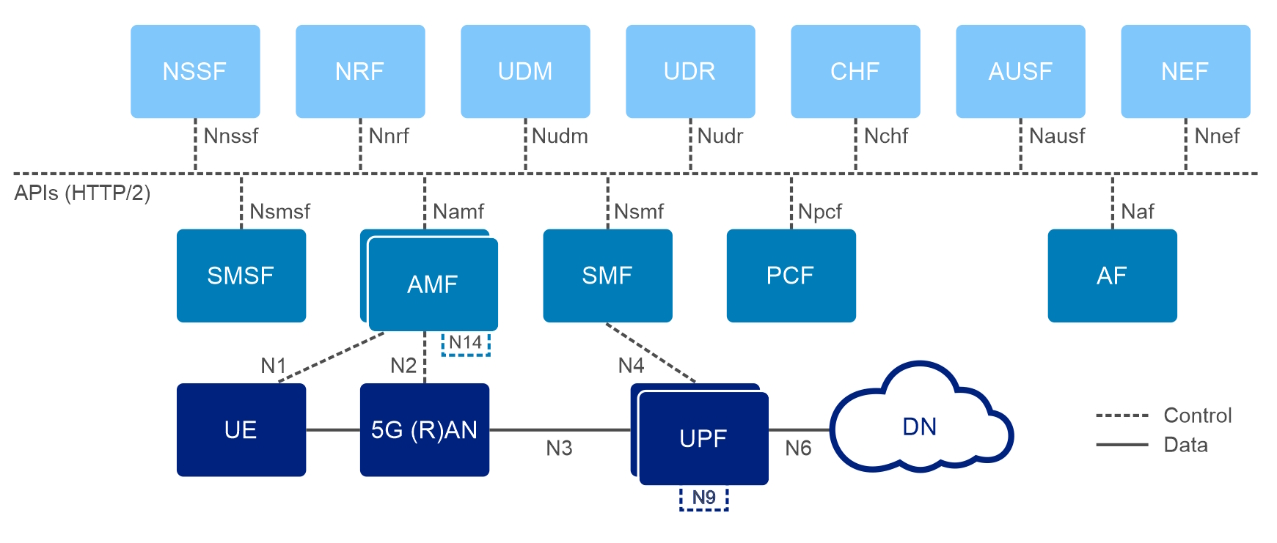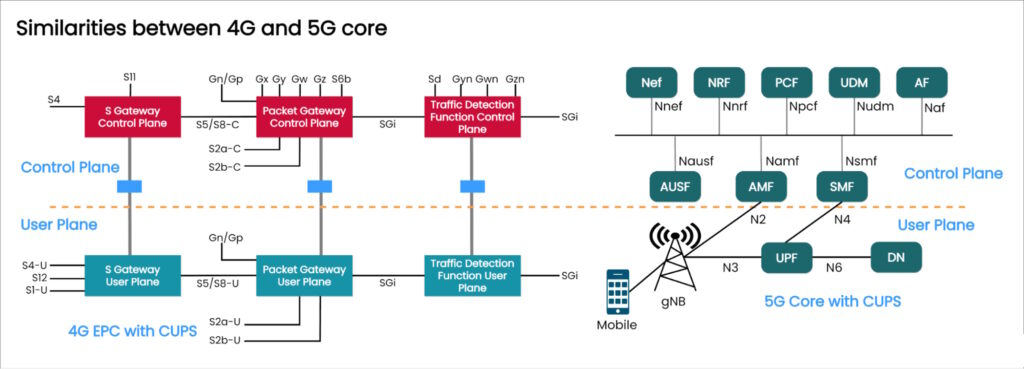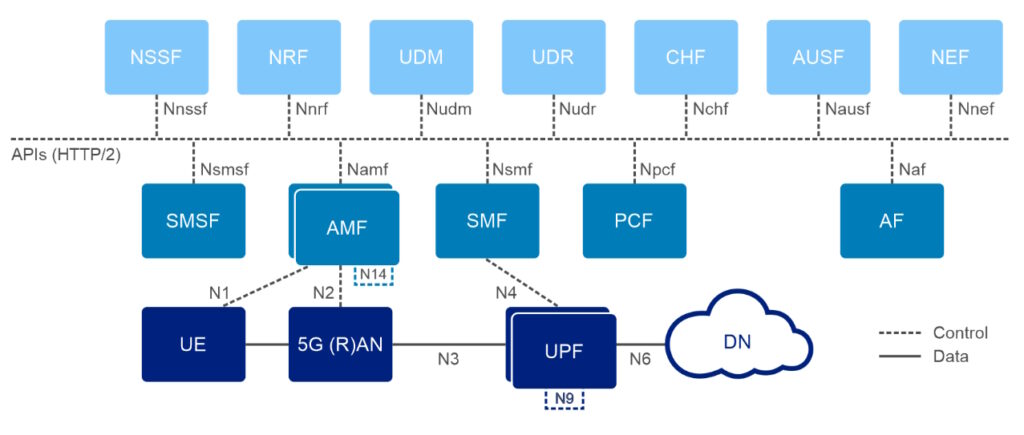
April 10, 2025 by Jeff Shepard
Collected at: https://www.eeworldonline.com/how-does-a-5g-core-work/
A 5G core (5GC) provides the central control and management for a 5G network. It roughly corresponds with the Evolved Packet Core (EPC) that supports converged voice and data services on a 4G Long-Term Evolution (LTE) network.
The 4G EPC is a flat architecture using point-to-point connectivity and is limited in scalability. The 5GC is cloud native and is a service-based architecture (SBA). The use of the cloud supports independent network functions (NFs) in the form of containerized microservices.
Those microservices support virtualization and scalability and can be upgraded independently, providing operational flexibility. HTTP/2 is the baseline communication protocol used by 5G NFs to subscribe to and register for services from other NFs. 5GC also decreases the dependencies between the access network (AN) and the core network (CN).
Beginning in 4G LTE, the user plane (UP) and the control plane (CP) were decoupled in the protocol stack. The initial 4G architecture tightly integrated the CP and UP in the EPC and network elements like base stations. The addition of Control and User Plane Separation (CUPS) enables LTE to support various use cases.
CUPS was further developed and enhanced in 5G. It now supports higher data rates, lower latencie,s and a wider variety of use cases like Ultra Reliable Low Latency Communication (URLLC) (Figure 1).

Figure 1. Comparison of the 4G EPC and the 5GC structures. (Image: Telcoma)
The 5GC includes numerous network functions. Some key functions include (Figure 2):
- Access and Mobility Management Function (AMF) that supports user registration, authentication, and mobility management.
- Session Management Function (SMF) supports user sessions, including data flow control and quality of service (QoS) requirements.
- User Plane Function (UPF) that forwards user data packets between the network and the user device.
- Network Slice Selection Function (NSSF) that determines the appropriate network slice for a given user session based on application needs.

Figure 2. The 5GC is a cloud native service-based architecture. (Image: Dell)
More examples of 5GC core functions include:
- Network Exposure Function (NEF) creates a secure bridge between the 5GC and external applications. It also enables application functions (AFs) to provide information to the 3GPP network securely.
- Network Repository Function (NRF) supports the service-based architecture of the 5GC by managing all network function (NF) instances. It registers new NF profiles, updates profiles as needed, and deregisters profiles that are no longer in use.
- Policy Control Function (PCF) creates policies that other control panel NFs use. Policies can address QoS, usage monitoring, network slicing and subscriber management, and general resource allocations. It gathers information from NFs like the AMF, SMF, and Unified Data Management (UDM) to acquire critical information when making policy decisions.
- Unified Data Management (UDM) maintains subscriber data, policies, and related information.
- Unified Data Repository (UDR) stores the data from the UDM. Compared with the corresponding functions in the 4G EPC, the UDM and UDR provide the increased flexibility and efficiency needed to support the enhanced functionalities of a 5G network.
How it works
It begins with a device connecting with the AMF that performs identity verification and assigns an initial network slice. The AMF passes the device to the SMF to establish the session by specifying the QoS and the required network slice using the NSSF. The SMF also determines the best path for data routing through the UPF. The 5GC dynamically adjusts resource allocation throughout the session to optimize device and network performance.
Summary
5GC uses a service-based architecture and is cloud native. Its cloud native implementation supports rapid deployment, scaling, and integration of new services. It includes advanced security to ensure network integrity and protect user data. It supports the high data rates, low latencies, optimized QoS, and massive device connectivity required for advanced 5G applications.

Leave a Reply